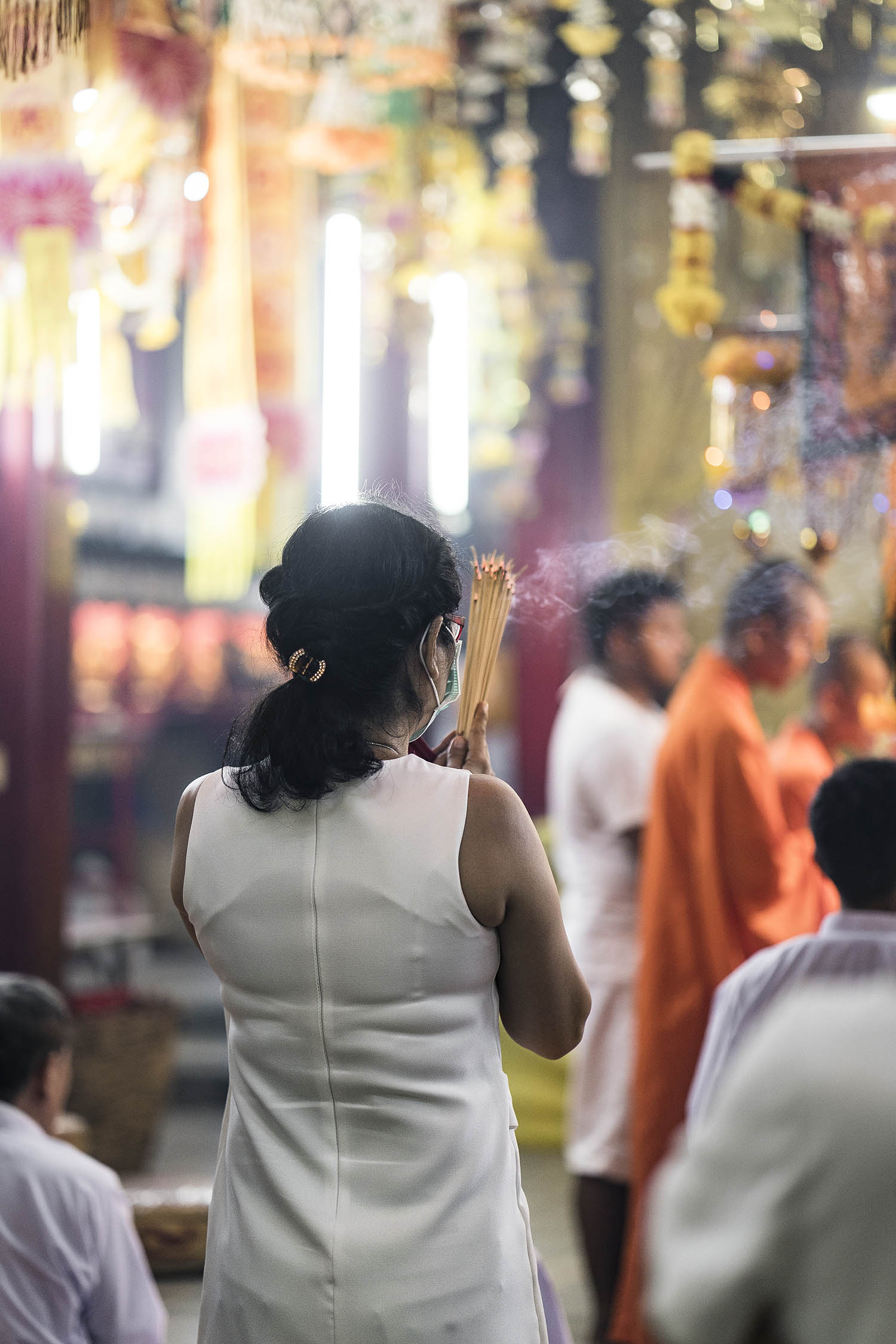TALAD NOI // BANGKOK
It’s hard for me to imagine a vegetarian life in Thailand. This is a country where soups are simmered with pork bones, salads are tossed with fish sauce, offal is eaten the way I devour a bag of chips (blink and you’ll miss it) and a dash of pig’s blood is an essential ingredient in the country’s famous boat noodles. But for nine days of the year, Thailand’s Chinese minority and much of the wider Buddhist population go completely vegan as part of their soul-cleansing for the Tesagan Gin Jay festival (เทศกาลกินเจ), which finished up this weekend.
During these few days, yellow flags are strung over street stalls and restaurants to signify their jay menu of meat-free, dairy-free and onion- and garlic-free meals (pungent foods are also a no-no). But, despite my main interests, the festival isn’t just about food, it’s a time to display your devotion to the Chinese emperor gods (in Phuket, this comes in the form of ritualized mutilation), and make your merits.
The festival has a Chinese Taoist background, said to have started by a Chinese opera troupe, who became sick while travelling in Thailand and pinned it down to them failing to show respect to the Nine Emperor Gods. To cleanse, they refrained from all unclean activities and upheld themselves to a strict vegetarian diet. The festival is celebrated on the first nine days of the ninth Chinese lunar month, and the best place to catch the festival in Bangkok is in Talad Noi, the old backstreets of Chinatown. Here, among the curving laneways and historic shophouses, is where the Jay Fest is at its most delicious.
As we turn off Charoenkrung Road into the cramped side streets of Talad Noi, the yellow flags beckon and a sea of white appears – it’s tradition to wear all white during the festival. “White clothes symbolise purity. This is the time when the gods come down, so we want to show our pureness,” says Kong, a white-shirted local woman who we meet at the open canteen across from the 220-year-old Chow Su Kong shrine, Bangkok’s oldest shrine. Here, smiling old ladies fill up bowls of stir-fried greens, glass noodles, spinach soup and mixed mushrooms from their giant vats. They motion for us to help ourselves to a bowl of rice and join a table, where the feast is laid before us and constantly replenished. “Everything is for free,” says Kong, who explains to us the motives behind the traditions. “The festival is about making merit, that’s why we don’t eat any animal products.”
There are a few other ways to make merit, too. Festival-goers are meant to refrain from sex and alcohol, while buckets of fish, snails and turtles often sit sadly beside temples, waiting to be set free into a nearby river. Outside the temple is a colourful, smoky group of decorated incense sticks and tall yellow candles, with paper lanterns and coiled incense glowing above.
“You can buy one of these and it will be lit on fire, it’s like a blessing, “says Art, another local who has come to celebrate with his mother. After the big wooden sticks are set alight, volunteers carry them to a dumpster to let them burn. The mix of fragrant smoke, flickering flames and loud Chinese music set to the backdrop of the dark, sparkling Chao Praya river it's an incredible sight.
Of course, it’s not a Thai festival without dessert. Just because it’s time to eat jay, doesn’t mean the desserts aren’t plentiful – in fact it kind of seemed like they outnumbered the savoury options. Red bean, taro and sesame pastries are endlessly stacked in crates, shaved ice-dessert stalls are heaving with customers on the hot, humid streets, while traditional black sesame soup is doled out to passersby, and vegan jellies are served to kids.
But the most popular dessert by far is a Thai-style peanut brittle made right there on the street. Peanuts are boiled in a sticky caramel then cooled and pounded with a wooden hammer. As it’s beaten and folded onto itself, the crushed peanuts crumble and soften, then the mixture is rolled out, filled with crushed cashew nuts and sliced into a flaky candy.
We’d passed stalls selling this as we walked through Talad Noi alley, but none had a line like the vendors near the Chow Su Kong shrine. So we join the queue and I asked the woman in front of me what we’re waiting for. ‘Tubtap,’ she says, doing the motion of the hammer pounding to indicate the reason for the moniker. I ask her why this particular vendor is better than the others nearby and she laughs and shrugs. “The others cost 20 baht, this one costs 30 baht!” she says, smiling widely. The psychology of prestige is real when it comes to choosing dessert.
The tubtap is still warm with a sticky, crunchy exterior, like peanut butter toffee and crumbling insides. Despite the line and local inclination, we actually preferred the tubtap at another stall, which wasn’t as hard and melted in your mouth with one bite.
Kong passes us as we are waiting in line. “You have to try tubtap during Jay festival,” she says. “This is the only time you can eat it fresh. After this, it will be gone!” We leave Talad Noi as the vendors ladle out their last batch of jay stews, soups and noodles, and just like that, the country ends its veganism. At least for another year.
PHOTOGRAPHY: Leigh Griffiths
WORDS: Eloise Basuki
All words and images are under copyright © 2019 strangertalk.co

























